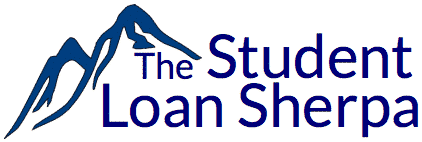All eyes are on loan cancellation, but President Biden appears poised to make some dramatic improvements to federal student loan rules. As a result, borrowers may see changes to Public Service Loan Forgiveness (PSLF) and payments slashed in half for Income-Driven Repayment (IDR) Plans.
Typically, I caution borrowers not to get excited about student loan proposals in the news. This particular instance is no exception. However, there is a reason for optimism. First, the proposed changes will not require action from Congress. Additionally, by fixing PSLF and lowering IDR payments, Biden would deliver on a significant campaign promise.
The Proposed Changes to Federal Student Loans
The Biden Administration is discussing numerous changes to federal student loans. Among the noteworthy topics of discussion:
Fixing Public Service Loan Forgiveness (PSLF) – Qualifying for PSLF has been notoriously difficult. As a candidate, Biden pledged to make PSLF less confusing. He also wants to award partial forgiveness to borrowers that have completed at least one year of certified payments.
Borrower Defense to Repayment – The Obama Administration created the Borrower Defense to Repayment to help federal borrowers defrauded by their colleges. Donald Trump’s Secretary of Education, Betsy DeVos, gutted the program. Biden has already canceled over a billion dollars under the program. He appears poised to remove many of the now-existing hurdles put in place by Secretary DeVos.
Discharges for Borrowers with Total and Permanent Disabilities – One of the consumer protections with federal student loans is that borrowers who become disabled may have their debt forgiven. However, many former borrowers had their debt reinstated because they failed to submit required follow-up paperwork. One report found that only a small portion of the eligible borrowers received the relief they were entitled. Addressing the unnecessarily complicated process could help many disabled borrowers.
Gainful Employment – A regulation added during the Obama years, the Department of Education created the gainful employment rule to penalize the schools that didn’t help graduates land jobs. Many student advocates are calling for additional requirements for the colleges that profit from federal aid.
Income-Driven Repayment (IDR) – The current IDR plans require borrowers to pay 10, 15, or 20 percent of their discretionary income towards their federal student loans. Biden wants to lower this number to 5%. The move would cut monthly student loan payments in half for many borrowers. Others could see an even more significant drop.
Reason for Optimism: The Rulemaking Process
The changes in discussion with the Department of Education are the first step in the rulemaking process.
I’ll skip the detailed rulemaking procedure and jump to the essential details for borrowers.
- It takes about one year. Biden taking the first step is noteworthy, but borrowers shouldn’t expect instant results.
- Passing a law through Congress is not required. Generally speaking, the purpose of rulemaking is to create specific regulations from broader legislation mandates. Congress could pass a law to overturn regulations made in the rulemaking process. However, getting a student loan bill through Congress is unnecessary for many of the proposed changes.
For added context, many of the Obama-era student loan rules came from this process. Thus, rulemaking is one way that the executive branch can directly impact the lives of student loan borrowers if Congress refuses to act.
More Borrowers Getting Student Loans Forgiven/Cancelled
Many borrowers are eagerly looking for student loan forgiveness for all.
The idea of mass debt cancellation has major appeal, but there are legal and political issues that might prevent it from happening.
Taken as a group, the changes in discussion could result in forgiveness for a significant number of borrowers. Additionally, these changes may also provide borrowers with the opportunity to have more debt forgiven. For example, if a 5% IDR plan were created, borrowers that qualify for forgiveness under PLSF or standard forgiveness would ultimately have more debt discharged.
Can the Next President Undo the Changes?
The risk of a future President undoing any progress achieved through rulemaking is a legitimate concern. Former Secretary of Education, Betsy DeVos, gutted many Obama-era regulations, like the gainful employment rule and the borrower defense to repayment.
However, other Obama-era policies survived. A notable example is the PAYE and REPAYE repayment plans. President Obama lowered monthly IDR payments from 15% of discretionary income to 10%. If President Biden created a 5% plan, it has a good shot at surviving in future administrations.





That’s a great and very helpful post, Thank you
Great! Love for Biden, may God come his all want for students true!